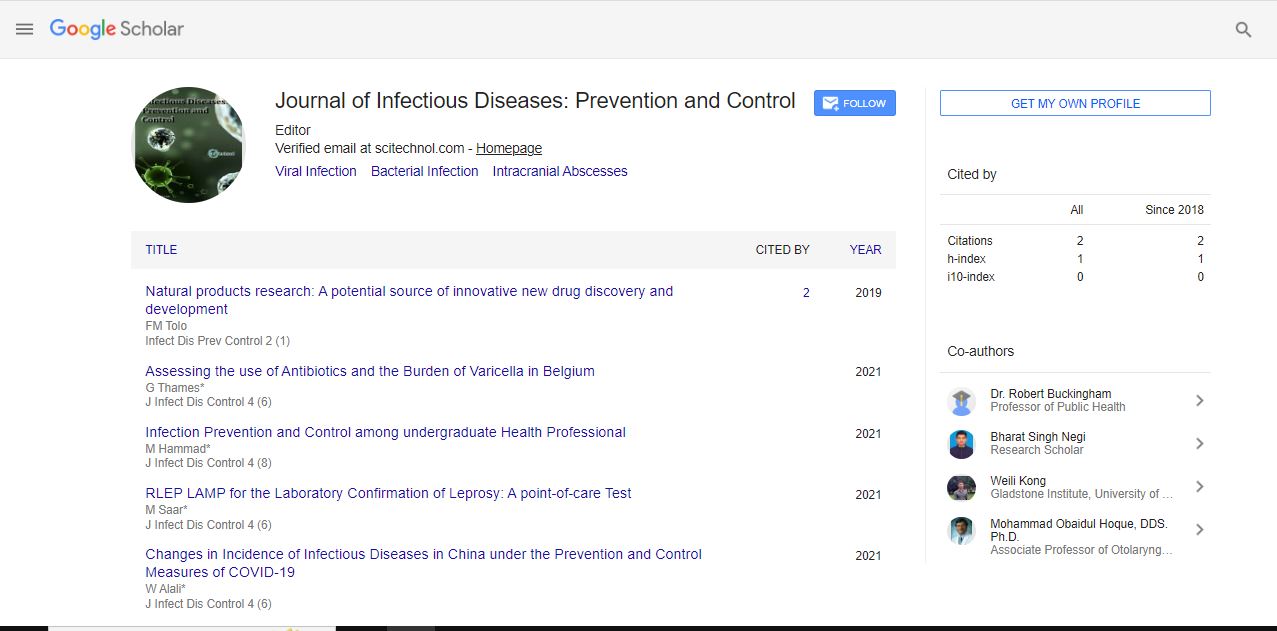Opinion Article, Vol: 6 Issue: 3
Global Efforts to Eradicate Viral Hepatitis by 2030 Progress and Challenges
Anne Connors*
1Department of Medicine, Queen's University, Kingston, Ontario, Canada
*Corresponding Author: Anne Connors,
Department of Medicine, Queen's
University, Kingston, Ontario, Canada
E-mail: Connors@anne.ca
Received date: 30 August, 2023, Manuscript No. IDPC-23-116436;
Editor assigned date: 01 September, 2023, PreQC No. IDPC-23-116436 (PQ);
Reviewed date: 15 September, 2023, QC No. IDPC-23-116436;
Revised date: 22 September, 2023, Manuscript No. IDPC-23-116436 (R);
Published date: 29 September, 2023, DOI: 10.36648/idpc.6.3.141
Citation: Connors A (2023) Global Efforts to Eradicate Viral Hepatitis by 2030 Progress and Challenges. Infect Dis Prev Control 6:3.
Description
Viral hepatitis is a major global health concern, affecting millions of people and causing significant morbidity and mortality. In response to this public health crisis, the World Health Organization (WHO) has set an ambitious goal to eliminate viral hepatitis as a public health threat by 2030. This essay explores the progress and challenges in the global efforts to eradicate viral hepatitis by 2030. One of the significant achievements in the global fight against viral hepatitis is the increased awareness and advocacy surrounding the issue. Numerous organizations, governments, and individuals have rallied to promote hepatitis awareness and advocate for better prevention, diagnosis, and treatment. This has led to a greater understanding of the disease and its associated risks. The development and widespread implementation of hepatitis B vaccines have significantly reduced the transmission of Hepatitis B Virus (HBV). Vaccination programs targeting newborns and high-risk populations have been particularly successful in reducing the burden of HBV-related liver disease.
Advances in antiviral medications have revolutionized the treatment of Hepatitis C Virus (HCV). New direct-acting antiviral drugs have shown remarkable cure rates, making the elimination of HCV an attainable goal. This progress has also made treatment more accessible and affordable in many parts of the world. Efforts to increase the availability of hepatitis screening and testing services have led to early diagnosis and appropriate care. Many countries have incorporated routine hepatitis testing into healthcare settings, enabling the identification of infected individuals and reducing the risk of transmission.
Numerous countries have developed national action plans to combat viral hepatitis, aligning their strategies with the WHO's goals. These plans include prevention, screening, and treatment initiatives, as well as efforts to reduce stigma and discrimination associated with the disease. One of the most significant challenges in eliminating viral hepatitis is the lack of funding. Despite the clear benefits of investing in prevention, testing, and treatment, many governments and donors allocate limited resources to combat this disease. A shortage of financial resources can hinder the implementation of comprehensive hepatitis programs. Stigma and discrimination remain barriers to hepatitis control efforts. People living with viral hepatitis often face discrimination, making it challenging for them to seek testing and treatment. Reducing stigma and discrimination is crucial for effective elimination strategies. Access to affordable and high-quality healthcare services is another obstacle. Many individuals in low- and middle-income countries lack access to essential hepatitis services, hindering their ability to get tested and receive treatment. Viral hepatitis disproportionately affects vulnerable populations, including people who inject drugs, prisoners. Tailoring interventions to reach these groups and provide effective care remains a significant challenge. While progress has been made in raising awareness, there is still much work to be done. Many people remain unaware of viral hepatitis, its modes of transmission, and available prevention measures. Expanding educational campaigns is essential to reach the 2030 goal.
The global efforts to eradicate viral hepatitis by 2030 have made significant progress, but numerous challenges remain. Increased awareness, improved vaccination programs, advanced treatments, and national action plans are positive steps forward. However, addressing issues such as insufficient funding, stigma, limited access to care, high prevalence in vulnerable populations, and low public awareness will be critical in achieving this ambitious goal. It is essential that governments, organizations, and communities work together to overcome these challenges and ensure a healthier, hepatitis-free future for all. The goal of eradicating viral hepatitis by 2030 is a daunting one, but with continued dedication and collaborative efforts, it is achievable.
 Spanish
Spanish  Chinese
Chinese  Russian
Russian  German
German  French
French  Japanese
Japanese  Portuguese
Portuguese  Hindi
Hindi 